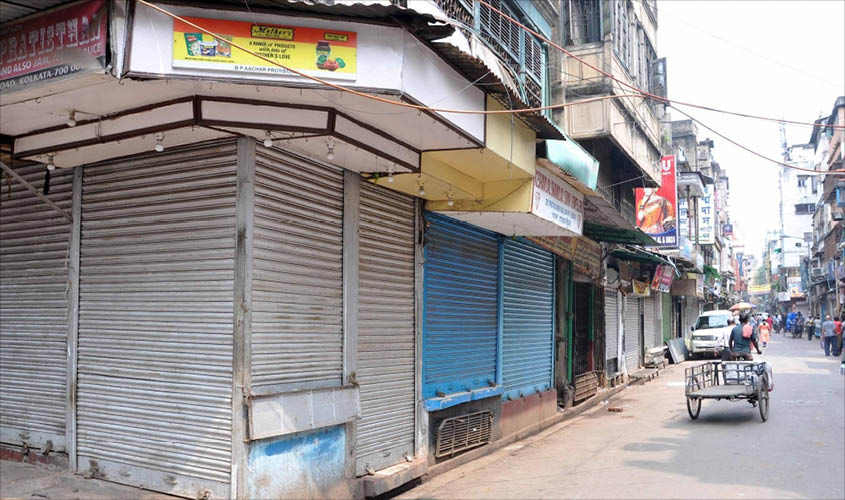The 12-hour bandh was called for ‘very strategic reasons’ and should help the party devise its strategy for the Lok Sabha polls.
The 12-hour Bengal bandh that was called by the West Bengal unit of the Bharatiya Janata Party earlier this week, to protest against the killing of two school children in Islampur, was to test its organisational strength in Bengal before the 2019 general elections, according to highly placed sources in the state unit of the party.
The BJP, which was slated to hold a “Nabbano gherao” rally (the gherao of the West Bengal Secretariat) on 26 September to protest against the “killing” of several BJP workers in Bengal and the “murder of democracy”, changed its plan at the last moment to call for the 12-hour bandh on the same day. According to sources in the BJP, this was done to raise the issue of the killing of the two students in Islampur in a much larger way and to test their cadre strength across the state.
A senior BJP functionary from Bengal told this correspondent: “The bandh was called for very strategic reasons. The party decided to cancel the Nabanno gherao rally, which would have garnered much more traction than the bandh did, just to test what kind of organisational strength the party has been able to gather in the different districts across the state. Through this, the BJP’s Bengal unit has gauged the areas and districts where they have their cadre strength and their support base. This could be one of the premises on which the party would start devising its strategy for the 2019 Lok Sabha elections.”
The BJP, which is slowly growing into the principal Opposition party in Bengal and is eyeing 22 of the 42 Lok Sabha seats that the state has, called the bandh held on 26 September a “complete success”. State BJP president Dilip Ghosh also hailed the party workers for “peacefully” executing the bandh across the state and making it a “success”. Senior BJP functionaries said that the success of the bandh has given a fresh lease of life to many party workers who were either being threatened by the ruling Trinamool Congress (TMC) or were too afraid to come out and work for the party openly. It is now expected that the organisation will grow stronger in the state with such workers coming out once again before the general elections.
The BJP claimed that despite the TMC making all out efforts to stall the bandh, its party workers and the people of Bengal came forward to make this bandh a success and this has given strength to the cadre on the ground. Rajib Roy, a senior leader of the Bharatiya Janata Yuva Morcha’s Bengal unit, told The Sunday Guardian: “Despite facing severe resistance from the state government and the ruling TMC, the bandh was much successful across the state. The people of Bengal have made their voices heard by accepting the bandh called by the BJP. This bandh was called to protest against the killing of two innocent students by the state machinery and the administration in Islampur. Democracy has been killed in Bengal and it is time we restored democracy.”
The bandh was seen to be most successful in districts like North Dinajpur, where the incident of the killing of the two students were reported on 20 September, allegedly by police firing during a protest organised by the students to demand a teacher who could teach different subjects in Bengali rather than in Urdu.
Districts like Midnapore, Bankura and Birbhum also saw similar response during the bandh where shops were mostly seen closed and roads deserted. Some clashes were reported from various parts of the state and some 1,500 people were arrested by the Mamata Banerjee administration, including Bharatiya Janata Yuva Morcha’s state president, Debajit Sarkar.

